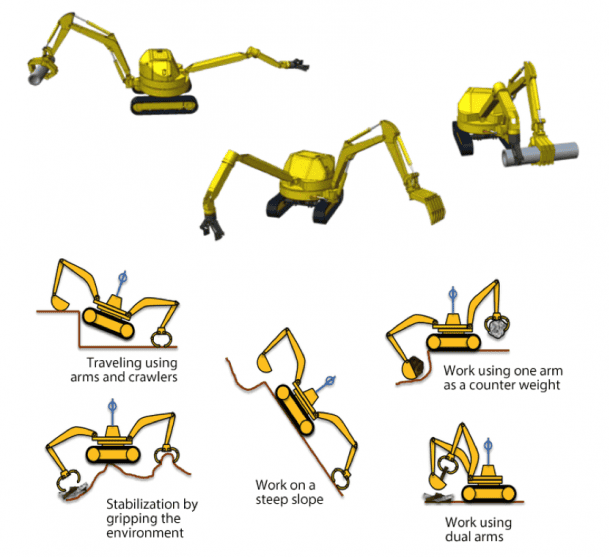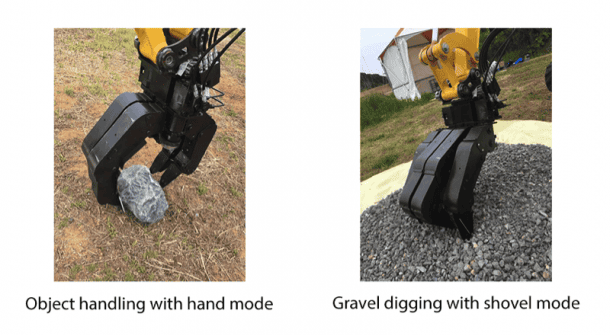Along with a lot of other manual tasks, a whole lot of construction is being taken over by robots. Japanese researchers from Osaka University have created a new concept construction robot that is intended to be used in disaster relief situations.
The prototype robot system is equipped with a double swing arm mechanism with multi-fingered hands that are hydraulically powered. The Osaka University Robot is a solution for the labor-intensive heavy construction applications required in disaster areas. The equipment required in such circumstances needs to be autonomous and remote controlled, capable of supporting itself on a rugged terrain. The concept robot can perform tasks with its two hands with their grip sensitive attachments.

All the features give the robot an advantage over the conventional construction machines with considerably less efficiency, limited mobility, and insufficient operability. The remote controlled machine uses multi-rotor unmanned aircraft vehicle (UAV) supplied with power through electric lines. This allows the operator to control the robot remotely while viewing the terrain from different viewpoints through a camera mounted on the machine.
The two arms of the robot are positioned on the same axis and installed close to its center of gravity for improved stability. The setting allows the robot a wider 360- degree work area unlike that of human shoulder joints. The four finger hydraulic hand at the end of the arm can operate in multiple modes depending on the shape of the hand. It can work in shovel or grip modes, and the operator can control object picking, and placing. The sensors installed on the gripper hands gives force feedback to the user hence improving the control precision.

The development of the dual-arm construction robot is a part of the Tough Robotics Challenge Program of Impulsing Paradigm Challenge through Disruptive Technologies Program (ImPACT) initiative in which researchers from Osaka University, Kobe University, Tohoku University, The University of Tokyo, and Tokyo Institute of Technology participated.
The team of researchers behind the project thinks that the functionality of this construction robot will exponentially increase the capacity of construction equipment to handle large-scale disasters and accidents. The team aims to further improve the robot in the coming times.
Source: Science Daily


